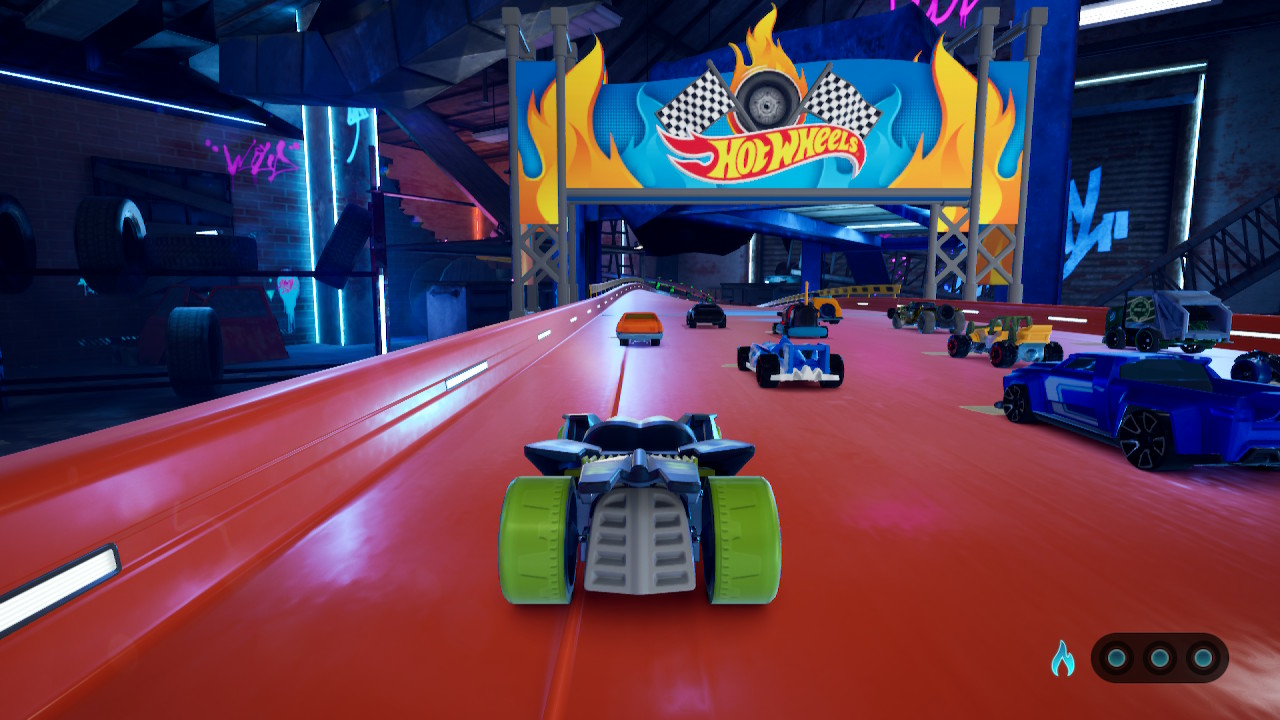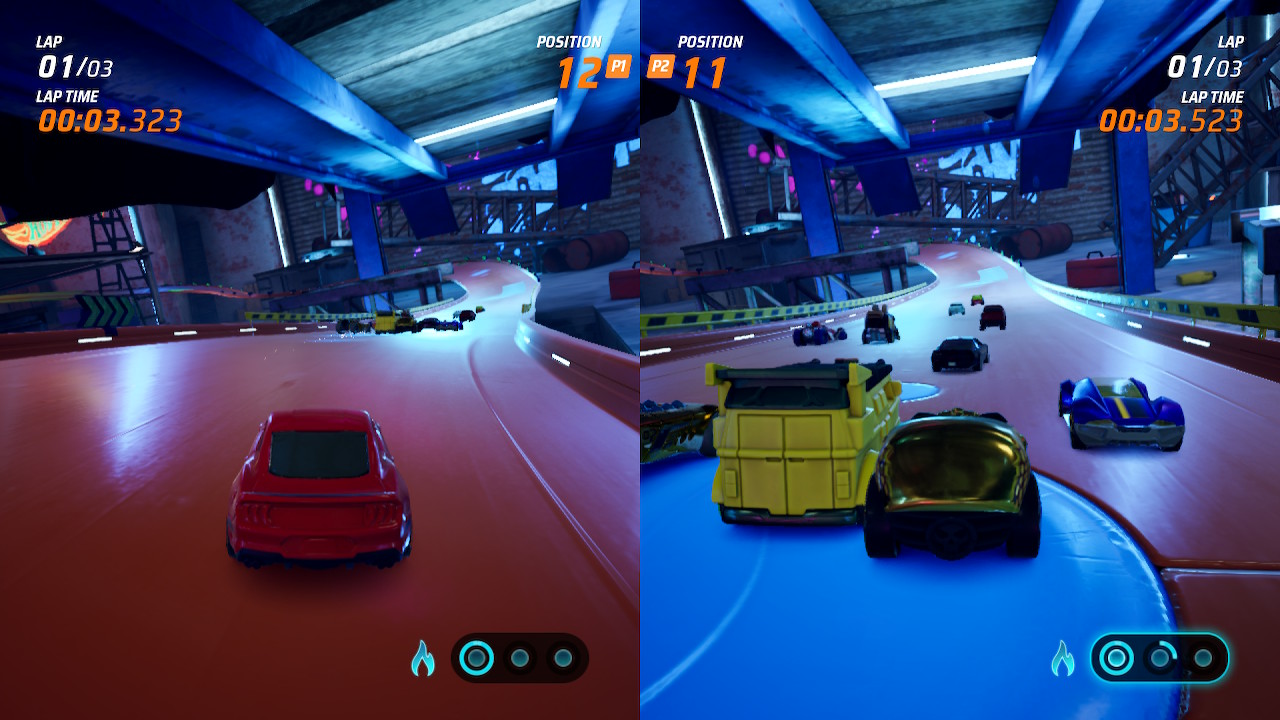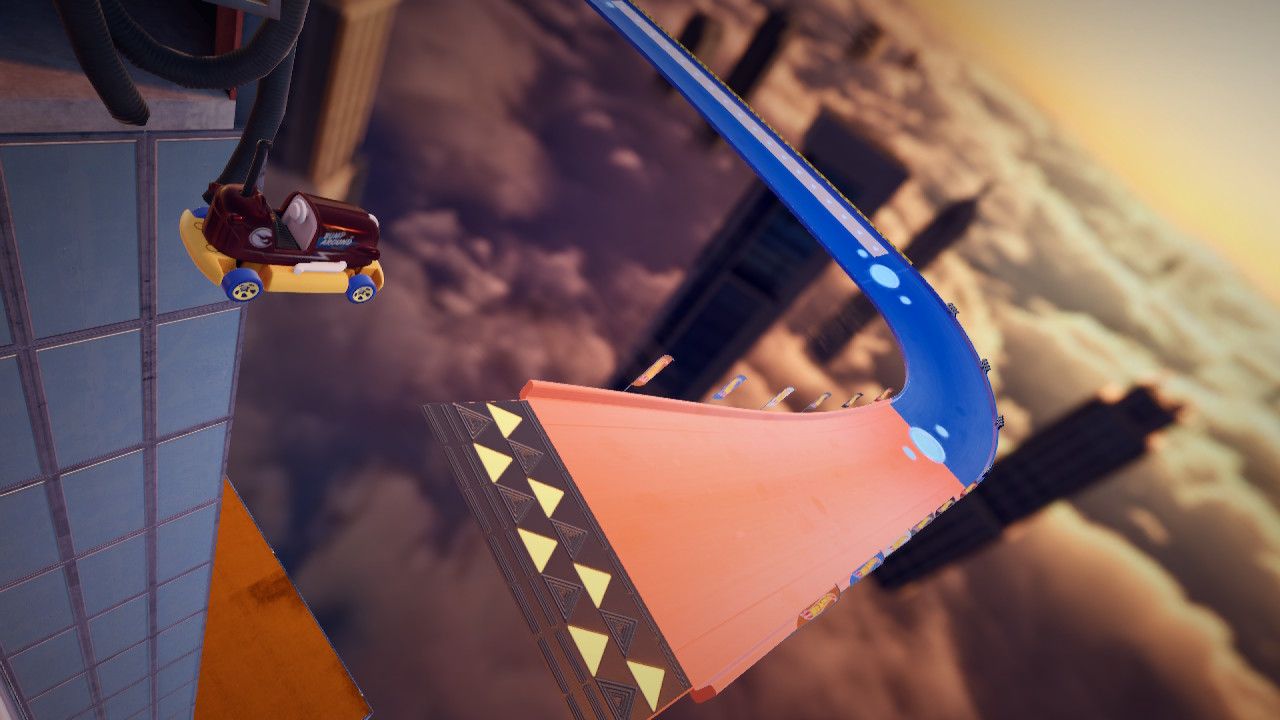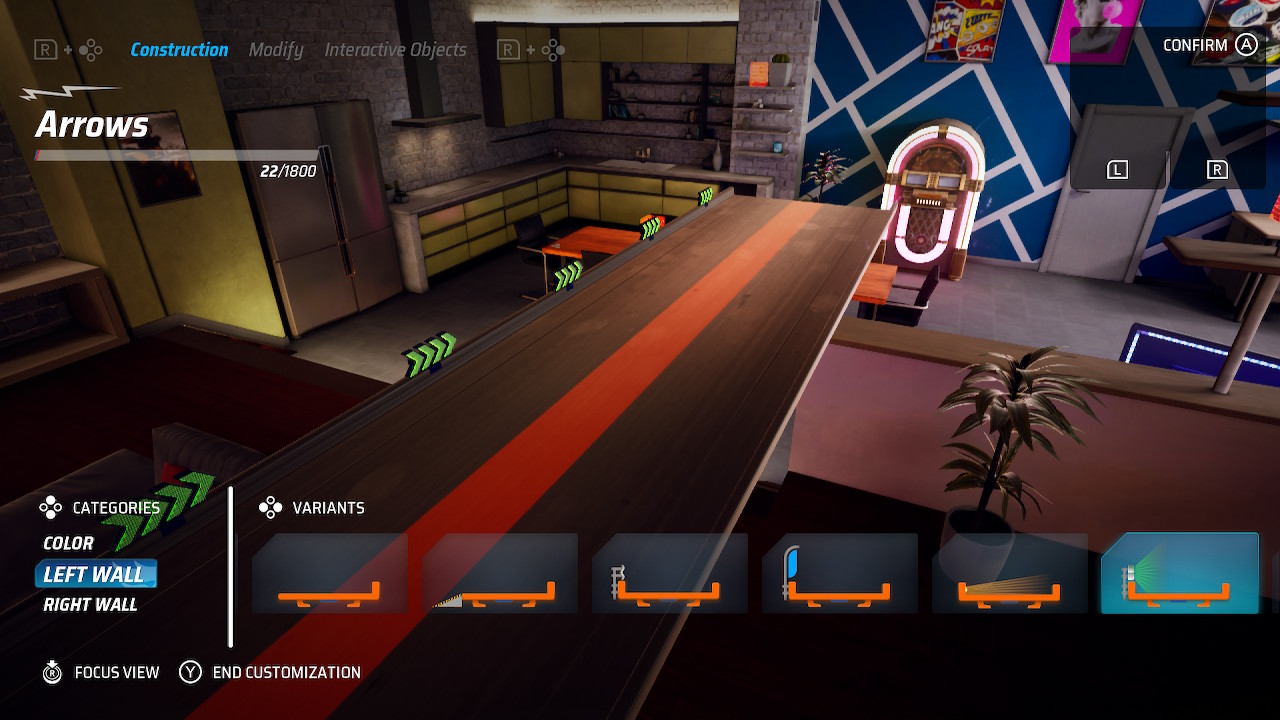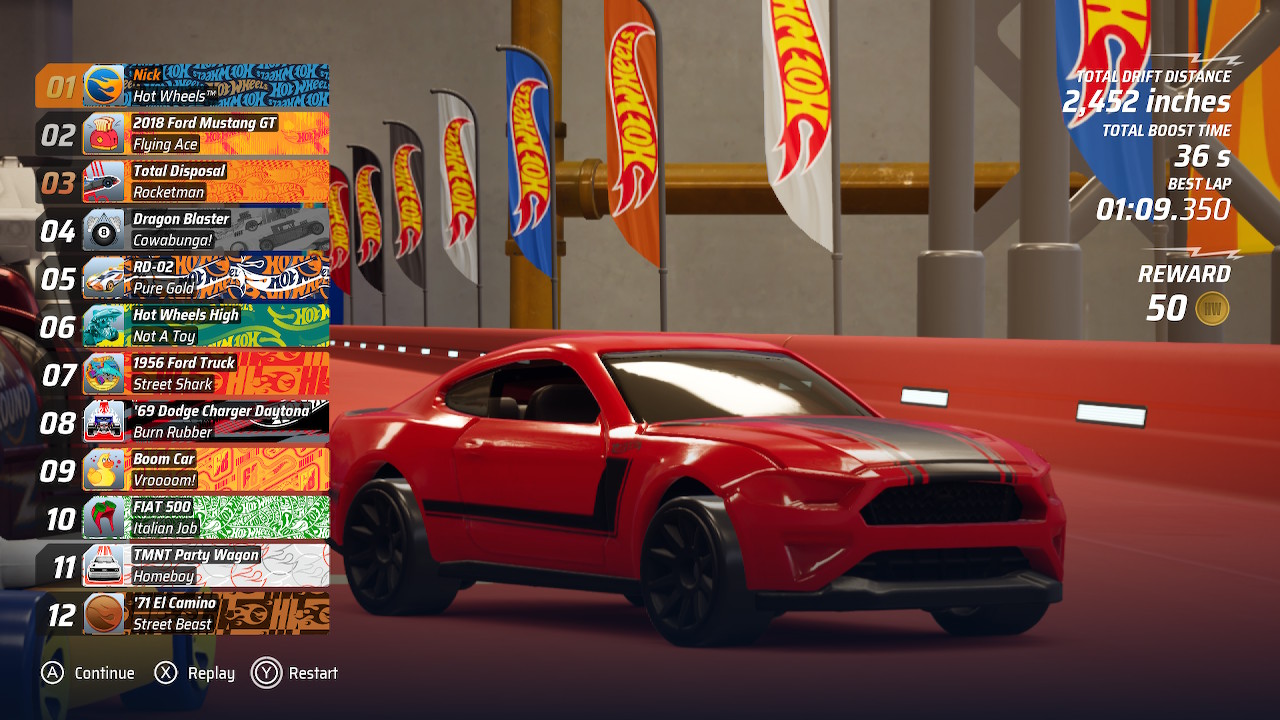[Review] Hot Wheels Unleashed
System: Switch
Release date: September 30, 2021
Developer: Milestone
Publisher: Milestone
There was a time when games based on popular toys were a dime a dozen; it used to be impossible to walk into the video games section of your local supercenter without seeing shelves filled with licensed games, many of middling quality. That’s not really the case today, as many of the smaller studios that previously produced those types of games have since shut down, been absorbed, or are now producing mobile games instead. So, I was pleasantly surprised not only that Milestone announced Hot Wheels Unleashed in 2021 as a major new release for the franchise, but also that the game had potential to be of higher quality and creativity than previous games. In fact, Hot Wheels Unleashed feels like a game built primarily for today’s adults who grew up with Hot Wheels years (decades?) ago rather than kids – a bold choice. But does Hot Wheels Unleashed manage to be a good game underneath its many layers of die-cast nostalgia?
Instead of being based on, say, some Cartoon Network TV show geared towards kids, Hot Wheels Unleashed instead promises the ultimate Hot Wheels fantasy. Not only can you collect, customize and race accurately reproduced models of some of the most iconic cars Mattel ever produced, you can finally design those insanely elaborate, sprawling racetracks in your basement that your parents never let you build as a kid! Now, I’m far from a Hot Wheels superfan – while I amassed quite the collection of toy vehicles as a kid, I never really got into building circuits like some of my friends did, and my only experience with Hot Wheels video games was playing Hot Wheels Velocity X on the family computer. So, while my childhood memories certainly helped pique my interest in this game, I feel like I have had enough distance from the brand that I’m able to review this game based on its own merits.
The first mode I evaluated when booting up Hot Wheels Unleashed was City Rumble, a single-player mode that boats over eighty races across roughly forty different tracks. This is where most players will want to start, as progressing through this mode is the main way to unlock courses to play in other modes and is the fastest way to unlock new cars and track pieces. Races are organized on a world map that charmingly resembles those classic fabric play mats, and players can usually choose from two or three different races to play through at any given moment. Most races are simple 3-lap circuits, but there are also point-to-point courses, and even a handful of “boss battles” that have you racing through gauntlet-style courses filled with hazards and obstacles. There are even a handful of “secret” races that can only be accessed once you have met certain conditions, such as obtaining the right vehicle.
Each race has you sprinting across Hot Wheels’ signature orange and blue plastic tracks, which are set up as toy-sized levels built in beautifully rendered real-world environments such as a college campus and an indoor skatepark. It’s really unique, and I loved the way the courses weaved under and over furniture, through air vents, and even off the side of buildings. These are the courses that many players probably tried to build (or dreamed of building) as kids, and Milestone really nailed that sensation. It’s clear that graphical compromises had to be made to get these relatively large environments running on the Switch – it doesn’t look quite as pretty as it does on other platforms, particularly when it comes to how the game handles shadows and object-pop in – but it still looks great overall.
The tracks themselves are simple at first, but quickly ramp up (sometimes literally) to include massive jumps and loops, and they just get crazier and crazier. Some tracks have branching routes, some have fans that can blow you off the track entirely if you’re not careful, and some even have traps (like a giant plastic spider that shoots spiderwebs at passing vehicles to try and get them stuck). It’s clear that the level designers for Hot Wheels Unleashed had a lot of fun bringing these elements to life, and most of the tracks were fun to race through.
That being said, despite the fact that there are over forty tracks in the game, they still began feeling repetitive sooner than I had hoped. There are only six unique environments in the game in which these tracks have been constructed in, and once I had raced in each one a few times, I began wishing that there was just a bit more variety on display here. Sure, the track layouts themselves are different, but ostensibly you are still just racing across plastic track pieces over and over again, with only the occasional new obstacle or hazard to shake things up. And with the vast majority of challenges being either time trials or simple races – I eventually found myself longing for something a bit different, such as a drifting or stunt challenge, for example. It’s worth mentioning that Milestone plans to add more environments to the game in the future as paid DLC (as well as new track modules, vehicles, and customization options, some of which they say will be free), but at present this feels like a game better suited for shorter play sessions if course variety is a priority for you.
One area where there is significantly more variety is with the Hot Wheel toys themselves. There are sixty-six vehicles in the game at launch, ranging from the bizarre to the sporty. There are even some licensed vehicles in the game, including cars from both real-world vehicle manufacturers as well as fictional cars (like the Batmobile). All of the cars are immaculate recreations of the original toys, to the extent that I could visually distinguish between the different types of plastic on each one. Each vehicle also has its own set of attributes that determines how it feels to drive; some are faster or better at accelerating to top speed while others have a more powerful boost feature, for example.
There are a few ways to unlock new vehicles. The main way is by doing well in races in the game’s main campaign; doing so can reward you with Gold to purchase new vehicles from a rotating daily selection, as well as from “Blind Boxes” which contain a random vehicle. Blind Boxes are awarded after winning certain races and can also be purchased with in-game currency. Cars obtained from these boxes have various levels of rarity, and it is possible to receive a duplicate of a car you may already have in your collection with slightly different stats and performance. (Duplicates can be broken down into Gold or Gears to either purchase new vehicles or upgrade existing ones).
That whole system may sound concerningly similar to the much maligned “loot box” system present in many games, but rest assured that it’s not possible to spend real-world money on either Gold or Blind Boxes, at least not as of this writing – and Milestone has previously confirmed that there will be no microtransactions in the game. There will be paid DLC containing exclusive cars, but Milestone has also indicated that some cars may be added for free down the road too. I never felt frustrated with the way in which new cars were unlocked while playing, either.
Unfortunately – and this was a big disappointment for me personally – I simply didn’t like how most of the cars felt to drive. It really didn’t matter what vehicle I was in or what track I was on, but I never felt like I had as much control over my vehicle as I should have. The game tells you from the start that drifting is crucial – and it really is, as it’s the only way to get around many corners at speed, not to mention it helps refill your boost meter significantly more quickly than is otherwise possible. But the threshold of accuracy required to execute a drift well feels razor-thin, and I almost always ended up barreling into the sides of a track when turning, even with what I felt like should have been great timing on my part. It really hampered my enjoyment of the racing itself, because ultimately, I felt like I was more at the mercy of the track design rather than my driving ability. There is also quite a bit of delay to pretty much everything in the game. I tested out multiple controllers in both docked and handheld mode, and it always felt like my car reacted just a smidge slower to my inputs than it should have.
I wonder if the game’s designers were aware of this when they were refining the driving mechanics, because it feels like the solution to this lack of control is hammering the boost button as much as possible. Hit a turn too hard? No matter, just ride along the rail and boost until you hit a straightaway, and it’s like it never happened. The game gives you a ton of opportunities to boost too. Drifting (even bad drifting) refills it almost instantly, as does driving over certain track segments, so I never really found myself running out it.
The racing still manages to be fun despite this lack of polish, though. At the end of the day, the fact that you are racing die-cast cars along plastic track pieces in a basement did the game quite a few favors here – you could argue that because these are supposed to be toys, well, they shouldn’t need to handle more realistically anyway. And I suppose that that would be a valid argument for some people. Still, I would like to see vehicle handling improved in future updates, as it makes it harder to recommend this game to non-Hot Wheels fans who might just be looking for some solid racing.
The rest of the game is much more polished, though – especially custom track creation. Milestone has included a robust track builder in Hot Wheels Unleashed, which will be getting a “significant” update to the tutorial on October 4 (not to mention general and minor fixes). Here you are given free reign to build pretty much any course you can imagine in any of the game’s environments. I don’t usually gravitate towards these types of modes that often, so I was really surprised at how much fun I had building my own course. You’ll unlock a pretty wide range of track pieces as you progress through the main campaign, ranging from magnetic track pieces to ramps, loops, and even big set pieces like a volcano-themed finish line. Many pieces can have their colors changed, and they can be placed pretty much anywhere; unlike real life, you can have your entire track floating in midair if you want, or you can weave your course among furniture and kitchen countertops if you’d rather go for a more realistic approach.
It all felt surprisingly intuitive to control, too. Once you have selected a starting point and picked your first track piece, extending your course is as simple as using the analog sticks and bumpers to make pieces longer or shorter, angle them up or down, or twist them from side to side. Pushing the “A” button sets your piece down, and immediately connects another piece of the same type to the track element you just placed. It’s really easy to swap between track elements, and everything snaps together by default. The pre-release version of the game I was testing didn’t even have its full tutorial implemented in the game yet (this will be added to the Switch version of the game roughly a week after launch, according to Milestone – along with some other minor bug fixes across the game), but as it is I really found it all to be quite intuitive. The only time it got complicated was when I tried to move portions of my track onto to the floor, rather than on the plastic track pieces, as this requires much more precise placement, but I eventually got the hang of it.
There are only two things limiting the scope and complexity of the tracks you can create in Hot Wheels Unleashed. The first is that each course you create has a limit placed on how many track elements the game can handle at a time (presumably to keep the game from crashing), but this won’t be an issue for the vast majority of creators, I reckon; I created a fairly long, complicated course and only used about 30% of the maximum amount of track pieces. The second restriction is that you have to actually be able to beat the course you made – which makes sense considering how complex tracks can get. Once you’ve done that, you can upload your track in-game for the world to download and race on – up to 100 tracks can be created, uploaded, and stored locally at once. I wasn’t able to download any player-created tracks for the purposes of this review, however, so I can’t speak to how intuitive it is to find and download new tracks.
Customization goes beyond tracks; each vehicle can also be completely redecorated with whatever colors, graphics and finishes you like via a detailed – if somewhat clunky – livery editor. It’s one of the most detailed customization tools I’ve seen in a racing game for some time, even if it didn’t feel essential to me. You can also customize one of the game’s race environments – the basement – with distinct types of walls, floors, decorations and more. You don’t get complete control – for example, you can’t physically move furniture around in the space, simply change its design – but I had fun with this mode, and what’s particularly cool is that any custom tracks you build in this environment will reflect your changes, even if they are shared online.
Speaking of online modes, Hot Wheels Unleashed does include online multiplayer, but it was not active during my review period and so I wasn’t able to test it out. Nothing about the game indicates that it will contain drastically different content than what I’ve mentioned so far, but the pre-release information provided by Milestone indicates that both private and public lobbies will be available for up to twelve players. There is also local spit-screen multiplayer for two players that lets you jump into any unlocked course with a friend. I actually encountered more stutters in single player modes than I did in split-screen, so this seems like it will be a good option for folks looking to play with a friend. The reduced field of view in split-screen does make nailing certain turns more difficult, though, so it’s better suited for casual play rather than competitive sessions.
The Verdict
Hot Wheels Unleashed isn’t a perfect package, but its reverence for accurately recreating what it feels like to race and build with Hot Wheels will win over the hearts of anyone with nostalgia for the brand. Racing is generally fun – although it would benefit from some mechanical refinements – and track-building is intuitive and open-ended. There’s a ton of room for customization, and I always enjoyed unlocking new vehicles and track pieces to play around with. There are certainly better racing games available on the Switch than this one, but Hot Wheels Unleashed is a wholly unique experience and one that might bring out more of your inner kid than you might expect.
Hot Wheels Unleashed copy provided by the publisher for the purposes of this review.

